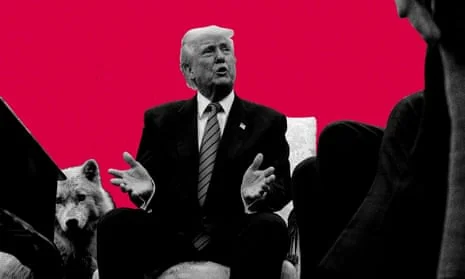
Tariff Turmoil and Courtroom Dramas: A Monumental Week in U.S. Politics and Economy
This week, the U.S. political and economic landscape was vividly upended as President Donald Trump executed a dramatic retreat on global tariffs, igniting confusion among allies, businesses, and markets, all while consequential court rulings and government shakeups further amplified the sense of unpredictability in Washington. The rapid cascade of developments underscores just how deeply the president’s unpredictable style reverberates across American society and the world.
The heart of the week’s drama centered around Trump’s abrupt climbdown on tariffs imposed just days earlier. In a stunning reversal, a 90-day pause was put into effect, rolling back increased tariffs for dozens of U.S. trading partners to a baseline 10%. Yet, in a glaring exception, Trump ratcheted up tariffs on Chinese imports to a staggering 145%, with Beijing swiftly retaliating with its own 125% levy on U.S. goods. The result was not just financial market whiplash—stocks plunged, then bounced—but also a new layer of economic anxiety.
The motivation behind these sudden moves remains hotly debated. White House Press Secretary Karoline Leavitt chided reporters for missing “The Art of the Deal,” positioning Trump’s vacillation as savvy dealmaking. Yet to many, including Nobel laureates Simon Johnson and Joseph Stiglitz, this inconsistency smacks more of chaos than cleverness. “These tariffs are an answer in search of a question,” economist John Cochrane quipped, highlighting the shifting justifications from job creation to deficit reduction that have trailed Trump’s policies. Even among Republicans, the tariff pause was met with open relief—cheers and smiles broke out in a Senate luncheon as news broke of the climbdown.
Meanwhile, the economic consequences loom large. Analysts at Yale’s Budget Lab estimate the average U.S. household could pay an extra $4,700 this year as a result of the tariffs. Amazon’s CEO warned that shoppers should brace for price hikes, while markets, although momentarily buoyed by the tariff pause, remained jittery amid warnings from Federal Reserve Chair Jerome Powell and JPMorgan’s Jamie Dimon that recession and “stagflation” are growing threats. “Everything at Walmart is going to double as a result of Trump’s tariffs on China,” Bemoaned John Cochrane, capturing national fears of a squeeze on both consumers and businesses.
The mounting unpredictability was mirrored in other branches of government. The week saw a series of high-stakes court rulings—from the Supreme Court ordering the return of a wrongly deported Maryland man, to federal judges blocking immigration enforcement actions and calling out the administration for constitutional violations. In parallel, Republicans pushed a controversial budget over the finish line, while Health and Human Services Secretary Robert F. Kennedy Jr. unveiled ambitious plans to investigate the causes of autism and potentially upend federal fluoride recommendations, signaling further policy upheaval on the horizon.
On the diplomatic front, the resignation of the U.S. ambassador to Ukraine amid faltering peace prospects, alongside revelations of Trump’s coal-boosting executive orders and moves to increase voting restrictions, painted a tableau of government at a crossroads—intent on flexing power, but often caught in its own contradictions.
As the dust settles, Americans are left grappling with big-picture questions: Can an unpredictable approach to trade and governance truly bring long-term prosperity, or will it erode confidence at home and abroad? In a week where “liberation day” quickly became a three-month delay, the only certainty is continued uncertainty. What’s next for the U.S. economy and its role in the world?
What do you think of the administration’s tariff moves and the wave of government shakeups? Leave your thoughts below and join the conversation.
Related issues news
What are the reciprocal tariffs?
Reciprocal tariffs are calculated as the tariff rate necessary to balance bilateral trade deficits between the U.S. and each of our trading partners. This calculation assumes that persistent trade deficits are due to a combination of tariff and non-tariff factors that prevent trade from balancing.
What is the tariff for Canada?
For Canada and Mexico, goods covered by the U.S., Canada and Mexico trade agreement will continue to have no tariffs, while products that aren't exempt under the trade deal will have a 25% tariff. Canadian energy and fertilizer products will have a 10% tariff.